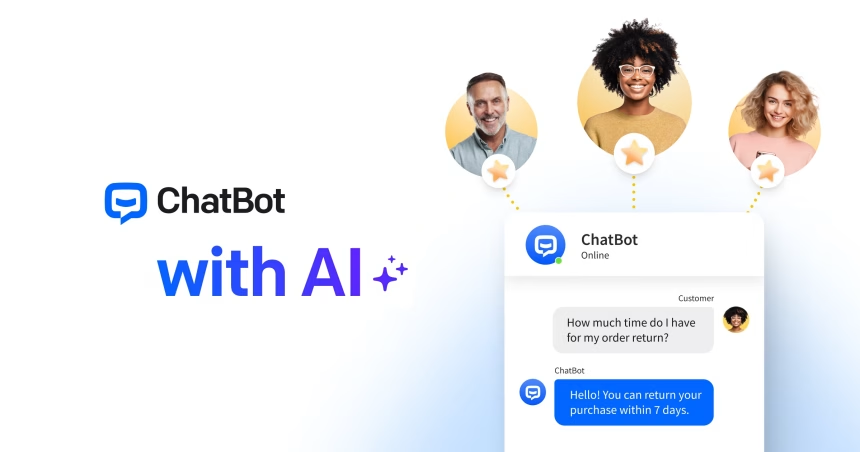What if your website could offer instant, personalized support 24/7 — without missing a beat? That’s exactly what AI chatbots for websites do. These smart virtual assistants are revolutionizing customer interactions by automating responses, guiding users, and boosting engagement in real time.
In this guide, we’ll explore how AI chatbots can transform your website, streamline customer support, and give your business a powerful competitive edge. Let’s dive in!
The Rise of Chatbots in Customer Service
In today’s fast-paced digital world, AI chatbots for websites are revolutionizing customer service. These AI-powered virtual assistants simulate human conversations, helping website visitors by answering questions, guiding them through processes, and offering instant support — all without human intervention.

What sets AI chatbots apart is their 24/7 availability. Whether it’s midnight or a busy afternoon, they respond instantly, eliminating long wait times and enhancing user satisfaction. As AI algorithms advance, these chatbots continuously learn from interactions, becoming smarter and more accurate over time.
But their impact goes beyond simple Q&A. By handling routine inquiries like order tracking, password resets, and product details, AI chatbots free up human agents to focus on more complex issues — striking a balance between automation and personalized service.
In short, AI chatbots for websites are not just a trend — they’re a game-changer in customer support.
Advantages of Integrating Chatbots into Your Website

Integrating AI chatbots for websites can unlock a range of benefits for both your business and your visitors. Let’s break down the key advantages:
- 24/7 Instant Support
Chatbots don’t take breaks. They provide round-the-clock support, ensuring visitors get immediate answers — whether it’s a simple “Where’s my order?” query or help navigating your site. - Boosted User Engagement
AI chatbots engage users by offering personalized recommendations, product suggestions, and interactive responses. For example, an online clothing store’s chatbot can suggest outfits based on a user’s preferences — keeping them hooked. - Improved Efficiency
Automating repetitive tasks, like answering FAQs or scheduling appointments, allows your human support team to focus on high-level problems, boosting overall productivity. - Data Collection and Insights
Every chatbot interaction collects valuable data — from customer pain points to popular product searches. Analyzing this data helps you refine your offerings and optimize your website for better user experiences. - Increased Sales and Conversions
Chatbots guide users through sales funnels by recommending products, answering payment-related questions, and addressing objections in real time — ultimately reducing cart abandonment rates.
By leveraging AI chatbots for websites, you create a seamless experience for users while giving your team the bandwidth to focus on tasks that require human creativity and problem-solving.
How Chatbots Can Enhance User Experience
When it comes to user experience, AI chatbots for websites play a crucial role in making interactions smooth, fast, and personalized.
- Instant Support Without the Wait
Gone are the days of long hold times or waiting for an email response. AI chatbots provide instant, accurate answers — whether a visitor is searching for shipping details or troubleshooting an issue. - Human-like Conversations
Advanced AI chatbots use natural language processing (NLP) to understand and respond conversationally. They make users feel heard, almost like chatting with a real person — creating a more engaging and satisfying experience. - Seamless Navigation
Confused users often bounce from the website. Chatbots act as virtual guides, helping visitors find the information they need quickly, whether it’s locating a blog post, accessing account details, or understanding return policies. - Personalized Recommendations
AI chatbots analyze user behavior to offer tailored suggestions. Imagine a travel website’s chatbot recommending vacation packages based on a user’s previous searches — it’s personalized marketing at its finest. - Feedback and Continuous Improvement
Chatbots don’t just interact — they gather feedback. They can prompt users to rate their experience or share suggestions, providing real-time insights to help you enhance your website and services.
Ultimately, AI chatbots for websites do more than just automate tasks — they create meaningful, frictionless interactions that leave users satisfied and eager to return.
Best Practices for Implementing Chatbots on Websites
Identifying the Right Chatbot for Your Website
Choosing the right AI chatbot for your website is crucial for enhancing user experience and streamlining customer support.
- Define Your Chatbot’s Purpose
Start by identifying your goals. Do you need a chatbot to answer FAQs, assist with product recommendations, or qualify leads for your sales team? Pinpoint the exact role your bot will play. - Select the Right Type of AI
There are two main types of chatbots — rule-based chatbots for handling simple queries and AI-powered chatbots that learn from interactions and improve over time. If your website needs personalized user experiences, AI chatbots for websites are the way to go. - Ensure Easy Integration
Your chatbot should seamlessly integrate with your website’s existing tools — like CRM systems, live chat software, and eCommerce platforms. A bot that works well with your tech stack avoids unnecessary glitches. - Prioritize Customization
Your chatbot should reflect your brand’s tone, personality, and style. Users should feel like they’re interacting with an extension of your brand — not a generic robot. - Consider Your Budget
While free or low-cost chatbot options exist, investing in premium AI chatbots for websites often brings more advanced features — like machine learning, multilingual support, and analytics.
By carefully evaluating these factors, you can choose a chatbot that aligns with your business goals and user needs.
Strategies for Effective Chatbot Deployment
Successfully deploying AI chatbots for websites goes beyond adding a widget — it requires strategic planning. Here’s how to do it effectively:
- Outline Clear Objectives
What do you want your chatbot to achieve? Objectives might include reducing response time, boosting conversions, or enhancing user engagement. - Map the Customer Journey
Identify the touchpoints where a chatbot can be most useful. For example:- Greeting visitors on the homepage
- Assisting during checkout
- Offering support on FAQ pages
- Train Your Chatbot
Populate your chatbot with relevant FAQs and scripts. AI chatbots can evolve, so feeding them with quality data ensures they provide accurate answers and learn effectively. - Offer Human Support When Needed
AI chatbots for websites should handle routine queries, but complex issues need a human touch. Ensure there’s a smooth handoff to live agents when necessary. - Test Before Launch
Run simulations and test user flows to catch glitches before the chatbot goes live. This helps prevent awkward or unhelpful interactions.
With these strategies, you can create a chatbot experience that feels smooth, intuitive, and impactful.
Measuring the Success of Your Chatbot Integration
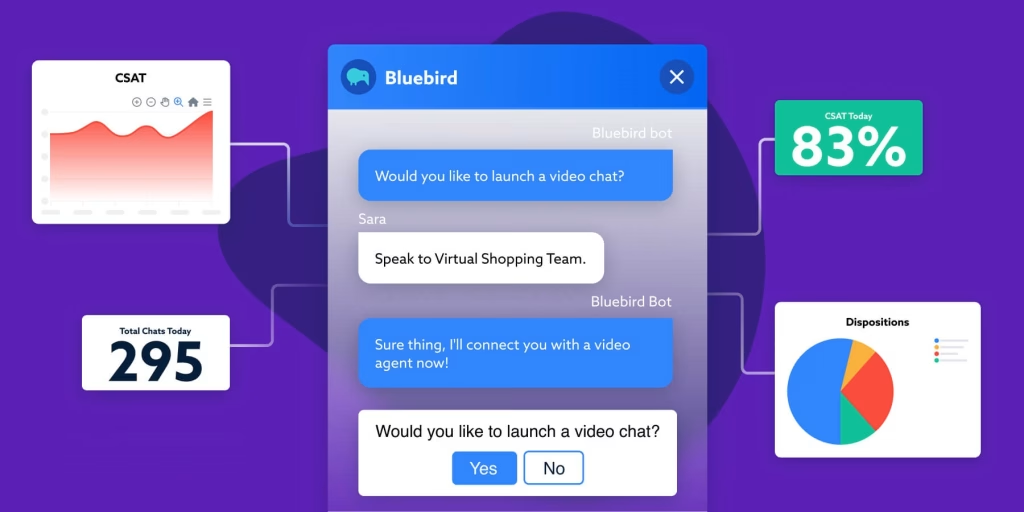
Once your AI chatbot is live, tracking its performance is essential for ongoing improvement. Here’s how to measure success effectively:
- Define Key Metrics
Set clear KPIs that align with your goals, such as:- Response Time: How quickly the chatbot replies to users
- Resolution Rate: The percentage of queries solved without human intervention
- User Satisfaction: Collect feedback through post-chat surveys
- Conversion Rates: How many chatbot interactions lead to a sale or action
- Analyze User Interactions
Review chat transcripts to spot trends, frequently asked questions, and any gaps in the bot’s knowledge base. This helps you fine-tune its responses. - Track Engagement
Monitor how often users interact with the chatbot. A high engagement rate indicates the bot is helpful and visible, while a low rate might mean users are ignoring it. - Refine and Retrain
AI chatbots for websites learn over time. Use the data you collect to retrain the bot, add new responses, and ensure it evolves with your users’ needs. - A/B Test Chatbot Scripts
Experiment with different greetings, call-to-action buttons, and conversation flows. Testing helps identify what resonates best with your audience.
By consistently tracking and optimizing performance, your AI chatbot will remain a powerful asset to your website’s customer experience strategy.
Best AI Chatbot Tools for Websites
If you’re ready to supercharge your website with AI chatbots, choosing the right tool is crucial. Let’s explore some of the best AI chatbot tools that can elevate your customer service, boost engagement, and drive conversions.
Plus, these tools offer user-friendly interfaces and powerful integrations — perfect for businesses of all sizes.
1. Tidio
Tidio is a top-tier AI chatbot platform designed for seamless customer support and lead generation. It combines live chat, chatbots, and email marketing to create a unified communication hub for your website.
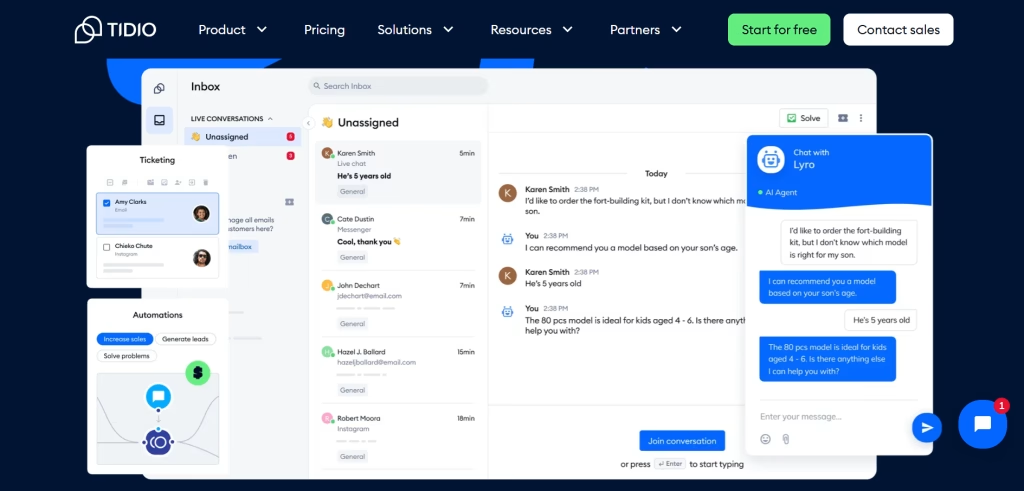
Key Features:
- AI-powered chatbots that answer FAQs and guide visitors.
- Real-time live chat to instantly connect with customers.
- E-commerce integrations with Shopify, WordPress, and more.
- Analytics dashboard to track chatbot performance and user engagement.
With Tidio, you can automate responses, capture leads, and enhance user experience — all without complicated coding.
👉 Ready to streamline your customer support? Try Tidio today!
2. Manychat
Manychat is a powerful AI chatbot tool known for its seamless integration with social media platforms like Facebook Messenger, Instagram, and WhatsApp. It’s perfect for businesses that want to combine website chatbots with social media engagement.
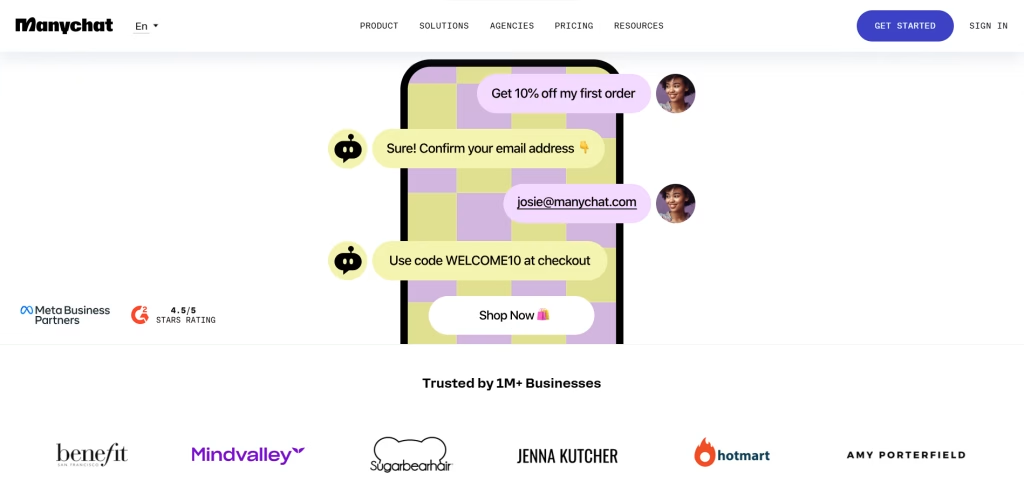
Key Features:
- Multi-channel support (Facebook Messenger, Instagram DM, WhatsApp).
- Drag-and-drop bot builder — no coding skills needed.
- Lead generation tools to collect emails and phone numbers.
- Personalized user journeys to nurture leads and boost conversions.
Manychat’s AI chatbots don’t just answer questions — they drive sales and build relationships.
👉 Boost your website and social media engagement with Manychat! Get started now!
3. Customers AI
If you’re looking to identify anonymous website visitors and supercharge your retargeting efforts, Customers AI is a game-changer. It focuses on visitor identification and remarketing, helping businesses turn traffic into high-quality leads.
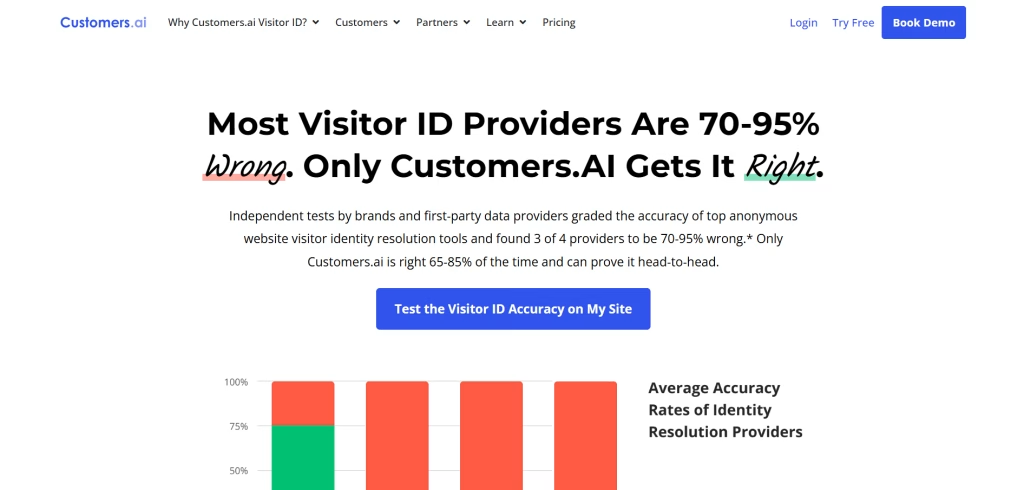
Key Features:
- Visitor identification to reveal anonymous web traffic.
- Ad retargeting with hyper-personalized campaigns.
- Seamless CRM integration for lead nurturing.
- Real-time data insights to optimize conversion strategies.
👉 Want to turn your website traffic into leads? Explore Customers AI now!
4. Landbot
Landbot is a leading AI chatbot tool focused on conversational marketing. It helps businesses engage with visitors in real time, boosting sales pipelines and automating lead qualification.
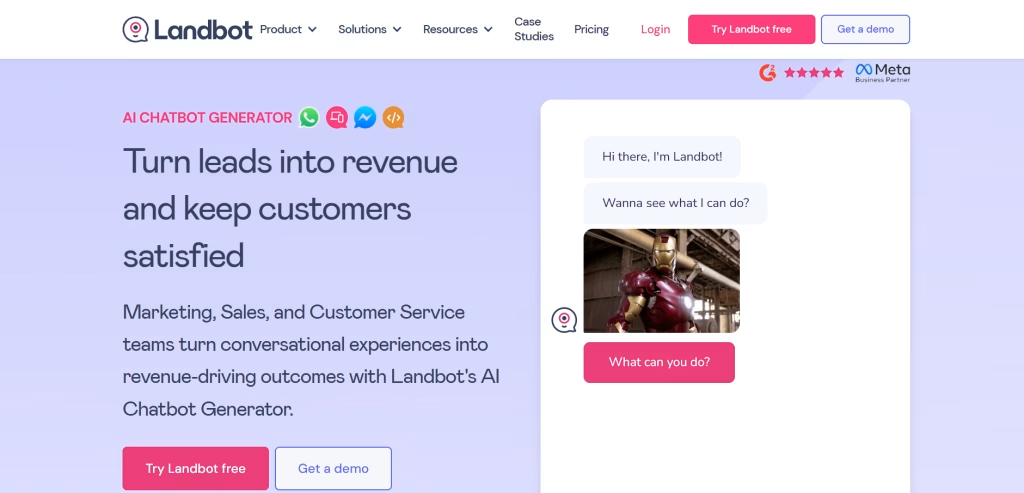
Key Features:
- AI chatbots for sales that book meetings and answer queries.
- Targeted messaging based on user behavior.
- CRM integration with tools like HubSpot and Salesforce.
- Detailed analytics to measure chatbot performance.
👉 Supercharge your sales funnel with Landbot. Start your free trial!
5. Intercom
Intercom’s AI-powered chatbots blend automation with a personal touch. It’s a versatile platform that is ideal for customer support, onboarding, and user engagement.
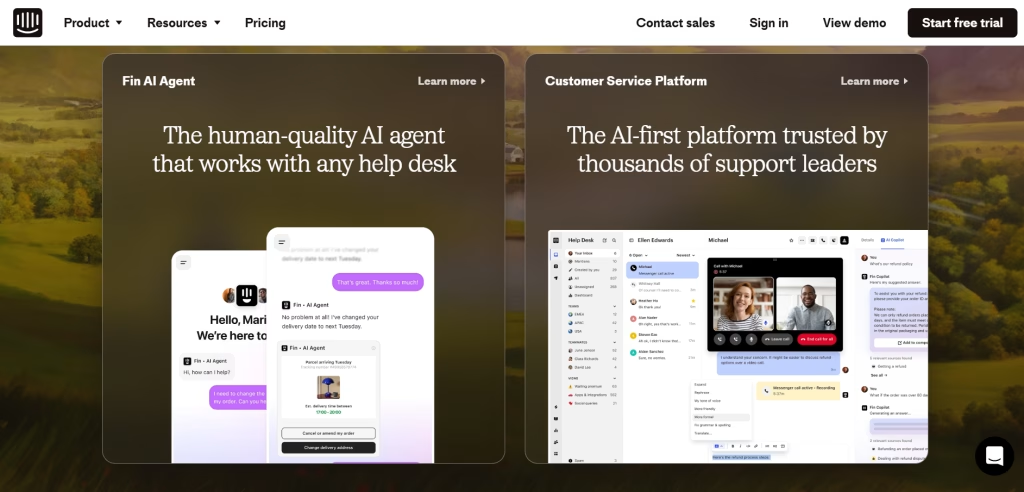
Key Features:
- Proactive support bots that greet users and offer help.
- Workflow automation for routing inquiries.
- Knowledge base integration for instant answers.
- Team collaboration tools to seamlessly transition to human agents.
👉 Deliver personalized customer experiences with Intercom. Try Intercom today!
Which AI Chatbot Is Right for Your Website?
Choosing the best AI chatbot for your website depends on your goals:
- For customer support and lead generation: Tidio
- For social media and multi-platform chat: Manychat
- For advanced AI and NLP capabilities: Customer AI
- For sales-focused automation: Landbot
- For personalized customer experiences: Intercom
Investing in AI chatbots isn’t just about automation — it’s about creating smarter, more responsive websites. Don’t wait to enhance your customer interactions.
👉 Find the perfect AI chatbot for your site and start transforming your customer experience today! Explore your options now!
Navigating Challenges and Leveraging Opportunities
Overcoming Common Pitfalls When Using Chatbots
While AI chatbots for websites offer impressive benefits, they can stumble without the right strategy. To sidestep these pitfalls, follow these best practices:
- Thorough Training: Ensure your chatbot is well-trained with clear, accurate responses to common questions. Use real customer queries to build a reliable knowledge base.
- Seamless Human Handoffs: Not all issues can be solved by AI. Set up a smooth handoff process so complex problems are quickly escalated to human agents.
- Regular Monitoring: Continuously review chatbot interactions. Look for patterns of confusion or errors, and fine-tune responses based on user feedback.
- Frequent Updates: AI evolves rapidly. Keep your chatbot’s data and algorithms updated to reflect the latest trends and customer needs.
By addressing these challenges head-on, you ensure your chatbot enhances — not hinders — the user experience.
Harnessing AI: Chatbots as a Tool for Growth
AI chatbots for websites aren’t just about automating customer support — they’re growth engines for your business. Here’s how they fuel success:
- 24/7 Availability: Chatbots provide round-the-clock support, handling routine inquiries and freeing your human team to focus on complex, high-impact tasks.
- Data-Driven Insights: Every interaction is a goldmine of customer data. Use these insights to spot trends, refine your offerings, and make smarter business decisions.
- Personalized User Experiences: AI chatbots tailor responses based on user behavior, offering product recommendations or support suggestions — boosting both satisfaction and sales.
- Continuous Learning: With machine learning capabilities, chatbots improve over time. The more they interact, the smarter they become.
- Sales Support: Smart bots don’t just answer questions — they upsell. Suggesting relevant products or guiding users through checkout can directly drive revenue.
- Cost Efficiency: Automating repetitive tasks reduces the need for large support teams, trimming costs and increasing profit margins.
In short, leveraging AI chatbots for websites transforms customer interaction into a strategic advantage. These bots not only streamline processes but also unlock new growth opportunities — making them essential for modern, competitive businesses.
Future Trends to Watch
As digital marketing evolves, AI chatbots for websites are stepping into the spotlight. They’re no longer just simple, rule-based responders—they’re becoming sophisticated tools that drive real-time engagement and hyper-personalized experiences, both of which are key trends shaping the future of online business.
One major trend is predictive AI. Modern chatbots use AI to analyze user data, predict customer needs, and suggest tailored solutions or products. For example, an AI chatbot on an e-commerce site might recommend products based on browsing history or previous purchases, boosting conversion rates by offering exactly what the customer is looking for.
Voice-enabled chatbots are also on the rise. With the growing use of voice search and virtual assistants like Alexa and Siri, integrating voice functionality into AI chatbots for websites creates more natural, hands-free interactions for users.
Additionally, chatbots are becoming crucial for omnichannel marketing strategies. They seamlessly operate across websites, social media platforms, and messaging apps—ensuring consistent, real-time support and engagement regardless of where users interact with your brand.
These trends highlight that AI chatbots are no fad. They are rapidly advancing and will continue to play a vital role in modern marketing strategies.
Conclusion
To wrap up, AI chatbots for websites have transformed from basic virtual assistants into dynamic tools that drive customer engagement and streamline business operations. They provide instant responses, 24/7 support, and personalized experiences—giving your website a competitive edge.
However, the key to chatbot success lies in continuous improvement. Regularly update your chatbot’s AI model, review data insights, and refine its interactions to keep it sharp and effective. As AI technology advances, businesses that embrace these innovations will not only enhance their customer service but also strengthen their overall digital presence.
Ultimately, AI chatbots for websites are not just a trend—they are the future of online customer interaction. By investing in this technology, you’re not only meeting current user expectations but also future-proofing your business for the digital landscape ahead.
FAQs About AI Chatbots for Websites
1. What exactly is a chatbot?
A chatbot is an AI-powered virtual assistant that interacts with users in real time through text or voice. It can answer questions, provide recommendations, and even assist with transactions — all without human intervention.
2. How do chatbots improve customer interactions?
AI chatbots for websites enhance customer interactions by providing instant responses, 24/7 availability, and personalized experiences. They handle multiple queries simultaneously, ensuring no customer is left waiting.
3. Are chatbots difficult to implement on a website?
Not at all! Many platforms offer user-friendly tools to integrate AI chatbots for websites. With minimal setup, you can have a chatbot running quickly, ready to engage and assist your visitors.
4. Can chatbots handle complex customer queries?
While AI chatbots excel at handling common and straightforward queries, they can also be programmed to escalate more complex issues to human agents. This ensures customers always receive the right level of support.
5. Do chatbots only work for large businesses?
No. AI chatbots for websites are beneficial for businesses of all sizes. Small businesses, in particular, can leverage chatbots to enhance customer service efficiently without expanding their team.
6. How do chatbots personalize customer interactions?
AI chatbots use data from previous interactions and customer profiles to tailor responses and product recommendations. This personalization makes customers feel valued and boosts overall satisfaction.
7. Are chatbots secure?
Yes, reputable chatbot platforms prioritize security and data privacy. They use encryption and other safeguards to protect customer information and ensure secure interactions.
8. What are the cost benefits of using chatbots?
AI chatbots for websites reduce operational costs by automating routine tasks and customer inquiries. This allows businesses to allocate resources more effectively and focus on strategic growth activities.
9. Can chatbots integrate with other systems?
Yes, AI chatbots seamlessly integrate with various systems like CRM software, e-commerce platforms, and social media channels. This ensures a smooth and cohesive customer experience across different touchpoints.
10. What is the future of chatbots in customer service?
The future of AI chatbots for websites looks promising! As AI technology evolves, chatbots will become even more sophisticated, capable of handling complex interactions and driving greater business value.

